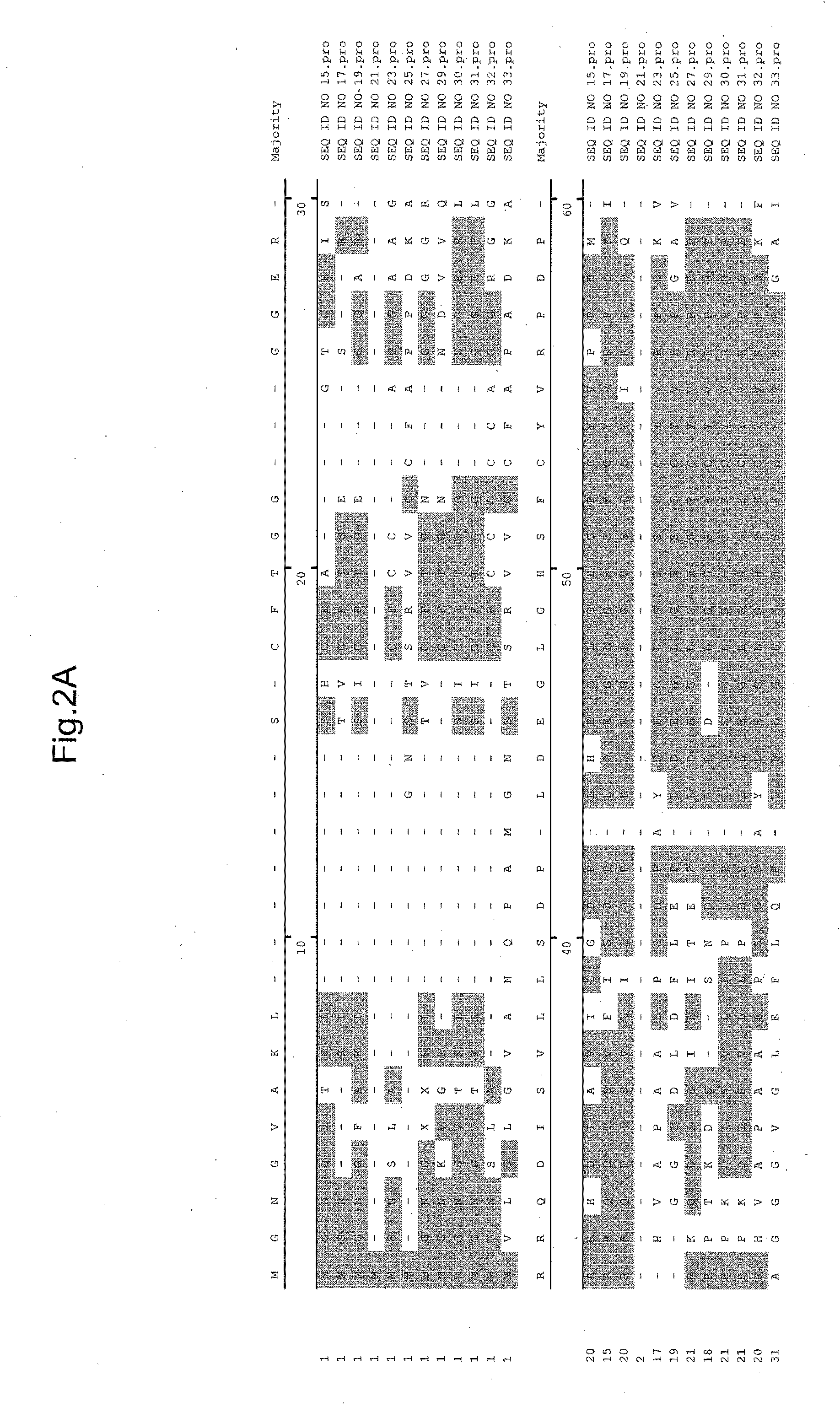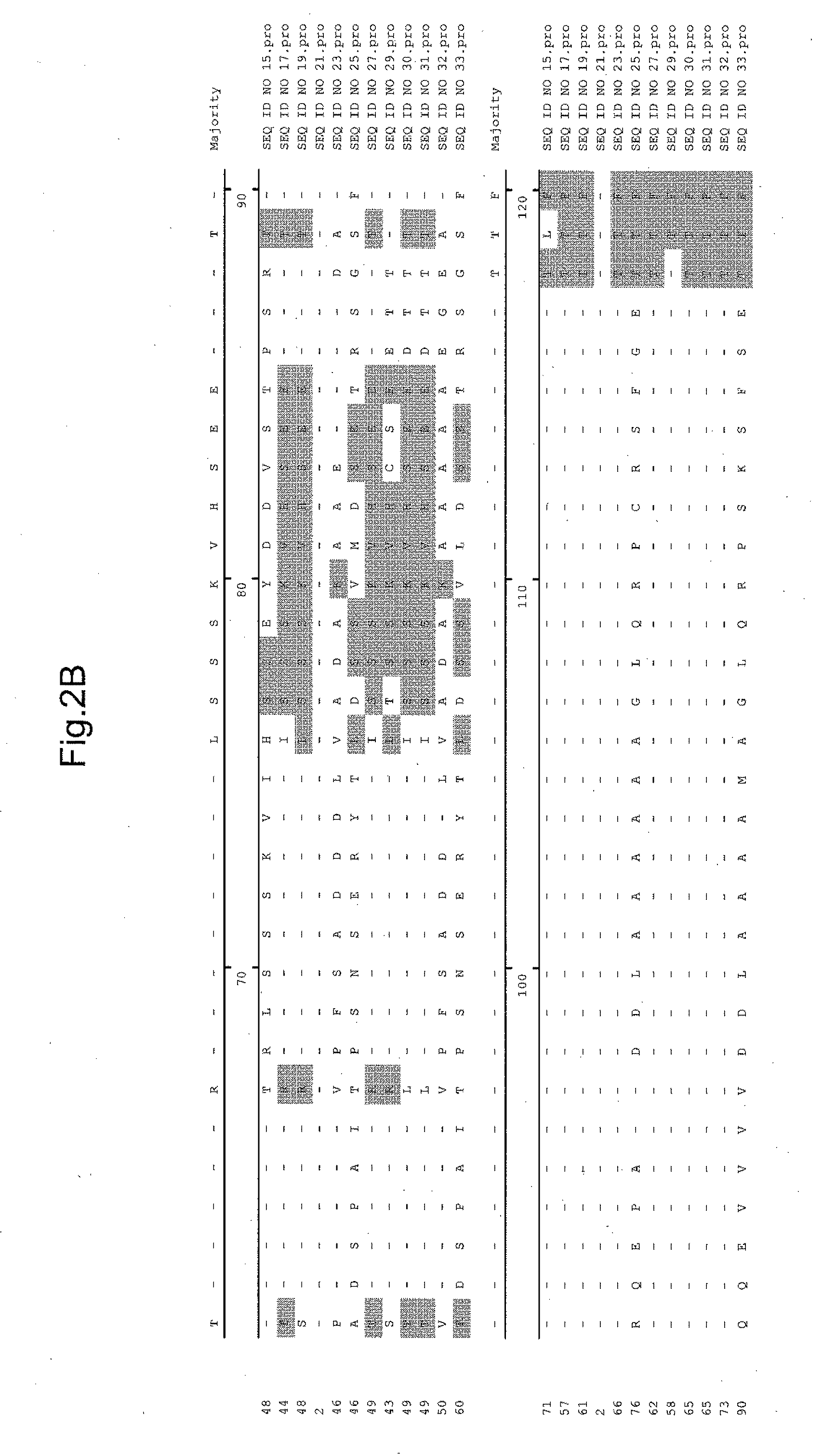Plants with altered root architecture, related constructs and methods involving genes encoding protein phophatase 2c (PP2C) polypeptides and homologs thereof
- Summary
- Abstract
- Description
- Claims
- Application Information
AI Technical Summary
Benefits of technology
Problems solved by technology
Method used
Image
Examples
example 1
Creation of an Arabidopsis Population with Activation-Tagged Genes
[0239]A 18.5 kb T-DNA based binary construct was created, pHSbarENDs2 (FIG. 1; SEQ ID NO:1;) containing four multimerized enhancer elements derived from the Cauliflower Mosaic Virus 35S promoter, corresponding to sequences −341 to −64, as defined by Odell et al. (1985) Nature 313:810-812. The construct also contains vector sequences (pUC9) to allow plasmid rescue, transposon sequences (Ds) to remobilize the T-DNA, and the bar gene to allow for glufosinate selection of transgenic plants. Only the 10.8 kb segment from the right border (RB) to left border (LB) inclusive will be transferred into the host plant genome. Since the enhancer elements are located near the RB, they can induce cis-activation of genomic loci following T-DNA integration.
[0240]The pHSbarENDs2 construct was transformed into Agrobacterium tumefaciens strain C58, grown in LB at 25° C. to OD600 ˜1.0. Cells were then pelleted by centrifugation and resusp...
example 2
Screens to Identify Lines with Altered Root Architecture
[0242]Activation-tagged Arabidopsis seedlings, grown under non-limiting nitrogen conditions, were analyzed for altered root system architecture when compared to control seedlings during early development from the population described in Example 1.
[0243]From each of 96,000 separate T1 activation-tagged lines, ten T2 seeds were sterilized with chlorine gas and planted on petri plates containing the following medium: 0.5× N-Free Hoagland's, 60 mM KNO3, 0.1% sucrose, 1 mM MES and 1% Phytagel™. Typically 10 plates were placed in a rack. Plates were kept for three days at 4° C. to stratify seeds and then held vertically for 11 days at 22° C. light and 20° C. dark. Photoperiod was 16 h; 8 h dark, average light intensity was ˜180 μmol / m2 / s. Racks (typically holding 10 plates each) were rotated daily within each shelf. At day 14, plates were evaluated for seedling status, whole plate digital images were taken, and analyzed for root area...
example 3
Identification of Activation-Tagged Genes
[0248]Genes flanking the T-DNA insert in lines with altered root architecture are identified using one, or both, of the following two standard procedures: (1) thermal asymmetric interlaced (TAIL) PCR (Liu et al., (1995), Plant J. 8:457-63); and (2) SAIFF PCR (Siebert et al., (1995) Nucleic Acids Res. 23:1087-1088). In lines with complex multimerized T-DNA inserts, TAIL PCR and SAIFF PCR may both prove insufficient to identify candidate genes. In these cases, other procedures, including inverse PCR, plasmid rescue and / or genomic library construction, can be employed.
[0249]A successful result is one where a single TAIL or SAIFF PCR fragment contains a T-DNA border sequence and Arabidopsis genomic sequence.
[0250]Once a tag of genomic sequence flanking a T-DNA insert is obtained, candidate genes are identified by alignment to publicly available Arabidopsis genome sequence.
[0251]Specifically, the annotated gene nearest the 35S enhancer elements / T-...
PUM
| Property | Measurement | Unit |
|---|---|---|
| Fraction | aaaaa | aaaaa |
| Fraction | aaaaa | aaaaa |
| Mass | aaaaa | aaaaa |
Abstract
Description
Claims
Application Information
 Login to View More
Login to View More - R&D
- Intellectual Property
- Life Sciences
- Materials
- Tech Scout
- Unparalleled Data Quality
- Higher Quality Content
- 60% Fewer Hallucinations
Browse by: Latest US Patents, China's latest patents, Technical Efficacy Thesaurus, Application Domain, Technology Topic, Popular Technical Reports.
© 2025 PatSnap. All rights reserved.Legal|Privacy policy|Modern Slavery Act Transparency Statement|Sitemap|About US| Contact US: help@patsnap.com



